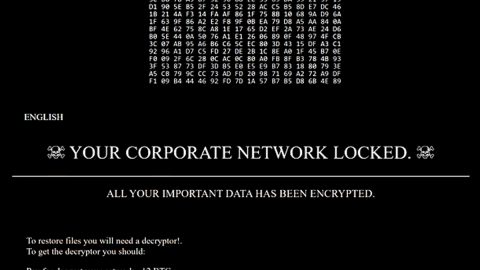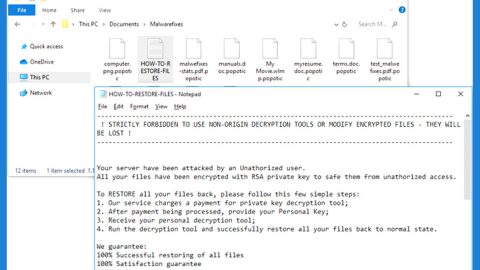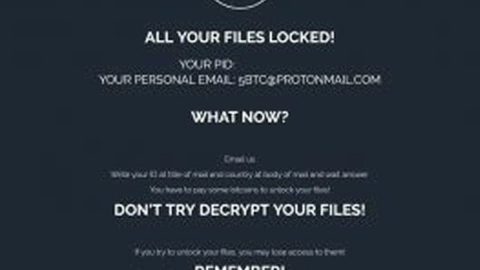What is Gotcha ransomware? And how does it execute its attack?
Gotcha ransomware is a new data-encrypting malware that was released at large by an unknown hacking group. Based on the analysis of this ransomware, it is not related to any well-known ransomware group. It uses a combination of the AES and RSA encryption algorithms in encrypting the files in an infected computer. It also marks the encrypted file with the “.gotcha” extension.
As soon as it infiltrates a targeted machine, Gotcha ransomware will drop its malicious payload that will establish a connection to a remote server where it downloads its other components. These components will be used to execute two modules, namely the information gathering and stealth protection modules. The first module is used to obtain information from the system.
The collected data is then used for the stealth protection module which avoids detection from any security programs like Firewall or antivirus programs as well as sandbox environment and virtual hosts. It also modifies some entries in the Windows Registry, allowing it to run its attack automatically in every system boot. Once the system modifications are all applied, it scans the computer for files with the following extensions:
.3dm, .3g2, .3gp, .7zip, .aaf, .accdb, .aep, .aepx, .aet, .ai, .aif, .as, .as3, .asf, .asp, .asx, .avi, .bmp, .c, .class, .cpp, .cs, .csv, .dat, .db, .dbf, .doc, .docb, .docm, .docx, .dot, .dotm, .dotx, .dwg, .dxf, .efx, .eps, .fla, .flv, .gif, .h, .idml, .iff, .indb, .indd, .indl, .indt, .inx, .jar, .java, .jpeg, .jpg, .js, .m3u, .m3u8, .m4u, .max, .mdb, .mid, .mkv, .mov, .mp3, .mp4, .mpa, .mpeg, .mpg, .msg, .pdb, .pdf, .php, .plb, .pmd, .png, .pot, .potm, .potx, .ppam, .ppj, .pps, .ppsm, .ppsx, .ppt, .pptm, .pptx, .prel, .prproj, .ps, .psd, .py, .ra, .rar, .raw, .rb, .rtf, .sdf, .sdf, .ses, .sldm, .sldx, .sql, .svg, .swf, .tif, .txt, .vcf, .vob, .wav, .wma, .wmv, .wpd, .wps, .xla, .xlam, .xll, .xlm, .xls, .xlsb, .xlsm, .xlsx, .xlt, .xltm, .xltx, .xlw, .xml, .xqx, .xqx, .zip
It then applies both the AES 256 and RSA 2048 in encrypting its targeted files. Following data encryption, it appends the “.gotcha” extension to every affected file and drops a text file named “!GOTCHA!.txt” which contains the following content:
“!!!!!!!!!!!!!!!!!!!!!!!!!!!!!!!!! !!! IMPORTANT !!!!!!!!!!!!!!!!!!!!!!!!!!!!!!!!!!!!! We gotcha files encrypted using encryption AES256-bit and RSA2048-bit. It is impossible to use private key. If you are interested in getting your files, contact immidiately!
Send your email to:
[redacted]
[redacted]
YOUR ID:
[redacted 16 uppercase AZ]
IMPORTANT: INCLUDE YOUR ID IN BODY OR SUBJECT FOR FAST REPLY!
– Team GOTCHA!
!!!!!!!!!!!!!!!!!!!!!!!!!!!!!!!!!!= IMPORTANT !!!!!!!!!!!!!!!!!!!!!!!!!!!!!!!!!!!!!”
How does is the malicious payload of Gotcha ransomware distributed?
The malicious payload of Gotcha ransomware may spread online using the most common distribution method used by ransomware developers which is malicious spam email campaigns. Crooks usually attach an infected file with malicious scripts used to launch the crypto-malware in the computer. Thus, you need to be extra careful in opening emails and downloading attachments as they could contain the malicious payload of dangerous ransomware threats like Gotcha ransomware.
Obliterate Gotcha ransomware from your computer with the help of the removal guide laid out below.
Step_1: First, tap the Ctrl + Shift + Esc keys on your keyboard to open the Task Manager.
Step_2: Under the Task Manager, go to the Processes tab and look for any suspicious-looking process that takes up most of your CPU’s resources and is most likely related to Gotcha ransomware.
Step_3: After that, close the Task Manager.
Step_4: Next, tap Win + R, type in appwiz.cpl and click OK or tap Enter to open Programs and Features under Control Panel.
Step_5: Under the list of installed programs, look for Gotcha ransomware or anything similar, and then uninstall it.
Step_6: Next, close the Control Panel and tap Win + E keys to launch File Explorer.
Step_7: Navigate to the following locations below and look for Gotcha ransomware’s malicious components such as “!GOTCHA!.txt” and “[random].exe” as well as other dubious files and then delete all of them.
- %TEMP%
- %WINDIR%\System32\Tasks
- %APPDATA%\Microsoft\Windows\Templates\
- %LocalAppData%
- %USERPROFILE%\Downloads
- %USERPROFILE%\Desktop
Step_8: Close the File Explorer.
Before you proceed to the next steps below, make sure that you are tech-savvy enough to the point where you know exactly how to use and navigate your computer’s Registry. Keep in mind that any changes you make will highly impact your computer. To save you trouble and time, you can just use Restoro, this system tool is proven to be safe and excellent enough that hackers won’t be able to hack into it. But if you can manage Windows Registry well, then by all means go on to the next steps.
Step_9: Tap Win + R to open Run and then type in Regedit in the field and tap enter to pull up Windows Registry.
Step_10: Navigate to the following path:
- HKEY_CURRENT_USER\Control Panel\Desktop\
- HKEY_USERS\.DEFAULT\Control Panel\Desktop\
- HKEY_LOCAL_MACHINE\Software\Microsoft\Windows\CurrentVersion\Run
- HKEY_CURRENT_USER\Software\Microsoft\Windows\CurrentVersion\Run
- HKEY_LOCAL_MACHINE\Software\Microsoft\Windows\CurrentVersion\RunOnce
- HKEY_CURRENT_USER\Software\Microsoft\Windows\CurrentVersion\RunOnce
Step_11: Delete the registry keys and sub-keys created by Gotcha ransomware.
Step_12: Close the Registry Editor and empty the Recycle Bin.
Try to recover your encrypted files using the Shadow Volume copies
Restoring your encrypted files using Windows Previous Versions feature will only be effective if Gotcha ransomware hasn’t deleted the shadow copies of your files. But still, this is one of the best and free methods there is, so it’s definitely worth a shot.
To restore the encrypted file, right-click on it and select Properties, a new window will pop up, then proceed to Previous Versions. It will load the file’s previous version before it was modified. After it loads, select any of the previous versions displayed on the list like the one in the illustration below. And then click the Restore button.
Congratulations, you have just removed Gotcha Ransomware in Windows 10 all by yourself. If you would like to read more helpful articles and tips about various software and hardware visit fixmypcfree.com daily.
Now that’s how you remove Gotcha Ransomware in Windows 10 on a computer. On the other hand, if your computer is going through some system-related issues that have to get fixed, there is a one-click solution known as Restoro you could check out to resolve them.
This program is a useful tool that could repair corrupted registries and optimize your PC’s overall performance. Aside from that, it also cleans out your computer for any junk or corrupted files that help you eliminate any unwanted files from your system. This is basically a solution that’s within your grasp with just a click. It’s easy to use as it is user-friendly. For a complete set of instructions in downloading and using it, refer to the steps below
Perform a full system scan using Restoro. To do so, follow the instructions below.













